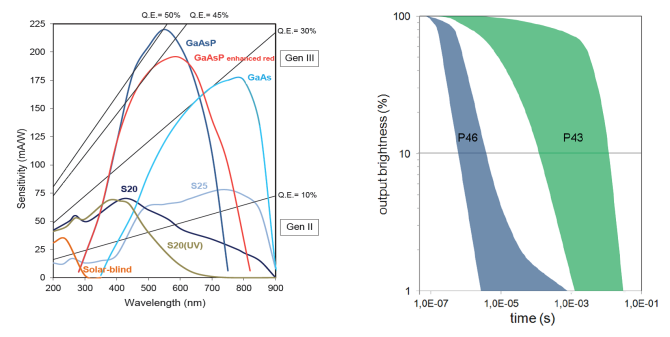
Equipment
High-Speed Intensified Imaging System
The high-speed intensified imaging system gives researchers the opportunity to study phenomena in nature that are highly dynamic, like flames, or to study processes that emit light at low intensity, like fluorescent emission in life organisms.
The high-speed intensified camera attachment can boost the light level 10.000 times, thus making a low-light level scene visible for the camera. Motion of ultrafast moving objects can be frozen by using the gating fast electro-optical shutter function. With an exposure time down to 40ns motion blur can be minimized.
The system consist of two devices: a high resolution high-speed camera PCO.Dimax HS4 (2000x2000px, @2277fps) and the HiCATT 25 1:1 high-speed intensified camera attachment from Lambert Instruments. Both devices can be used together but the HiCATT can also be mounted to another camera or microscope. This flexibility makes the system useful for all kinds of applications, e.g. fluorescence image, bio- and chemiluminescence imaging, combustion, time-resolved imaging, particle image velocimetry (PIV) and many more low light level applications in high-speed imaging.
Technical Details
Details of the set-up:
The high-speed intensified imaging system consist of the following equipment:
- PCO.Dimax HS4 high-speed video camera
- Lambert Instruments HiCATT 25 GaAs 1:1 40ns high-speed intensified camera attachment
- Intensifier gate control, a digital interface to control the gain and gate of the intensifier
- Workstation with camera and intensifier control software
- LED light source for fluorescence excitation
- Navitar Zoom 6000 modular lens system
Details of the camera:
- PCO.Dimax HS4 with 4 MPix resolution (2000 x 2000 pixels) monochrome CMOS sensor, 11 µm square pixels, with 12 bit dynamic range
- The global electronic shutter can be set between 1.5µs – 40ms
- Lenses with Nikon F-mount or C-mount can be used
- PCO Camware 4 software for remote control of the camera
- A variety of input/output channels are available for synchronisation with external equipment
- An image memory of 36 GB is available, examples of frame rate performance and recording duration:
o 2000 x 2000 pixels, 2277 fps, 5.6 s
o 1000 x 1000 pixels, 7039 fps, 6.9 s
o 1280 x 720 pixels, 8226 fps, 6.4s
o 800 x 600 pixels, 12841 fps, 7.7s - Region of interest can be set by steps of 2 x 2 pixels
Details of the intensified camera attachment:
- Lambert Instruments HiCATT 25 GaAs 1:1 40ns
- Two stage hybrid intensifier (Gen3 + booster), with a Gallium Arsenide photocathode, a P46 phosphor layer is used as anode screen which has a decay time of 500 ns (10%)
- Minimal gate width of 40 ns
- Maximum repetition frequency of 100 kHz
- Gain and gate of the intensifier can be controlled remotely via software
- Typical resolution on output 28 lp/mm, 16 x 16 mm effective area
- Input lens mount Nikon F-mount or C-mount, output lens mount Nikon F-mount, internal relay lens 1:1
Spectral response and phosphor decay time:

Applications
The high-speed intensified imaging system can be used in various research projects that have demands on low-light level imaging or capturing ultra-fast phenomena without motion blur.
Wageningen UR researchers will use the setup among other things for fluorescence imaging in zebrafish, observe birds, fish and mammals under low-light conditions. The system can also be used in combination with a microscope to study the movement of cells that have been tagged with a fluorescent marker.
The setup is not limited to life sciences applications can also be used for other measurement techniques like particle image velocimetry, time-resolved imaging, combustion research and many more low-light level applications in high-speed imaging.
Complementary techniques
The high-speed camera attachment can also be used in combination with Photron SA-X2 high-speed video camera facility from Wageningen University & Research, Shared Research Facilities:
More technical information
Further information about the PCO.Dimax HS4 can be found on the website of PCO.
For more information about the Lambert Instruments HiCATT, visit the Lambert Instruments website